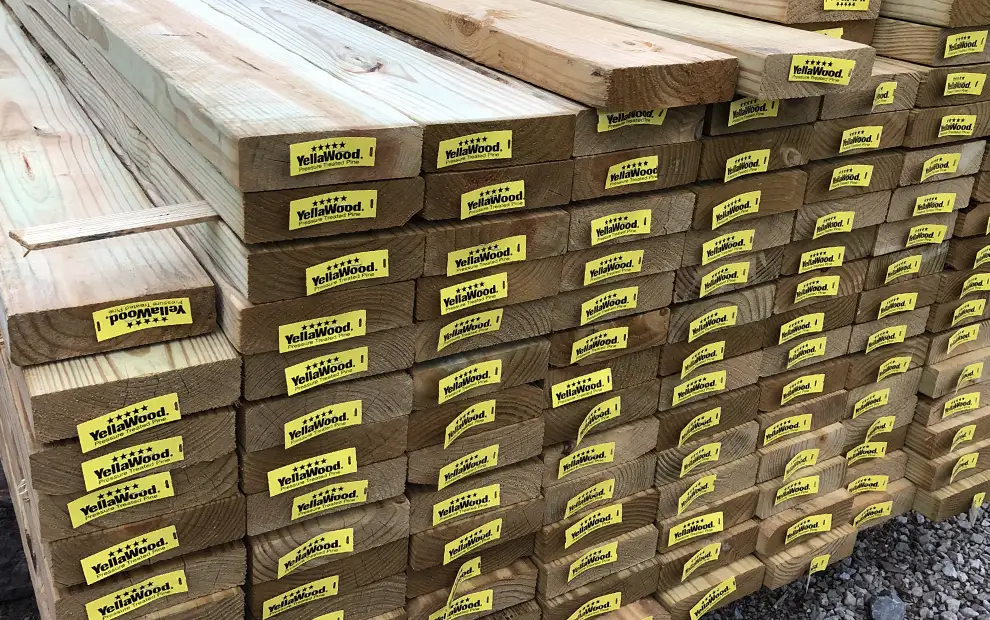
Pressure-Treated Lumber
Pressure-treated lumber is wood that has been treated with a preservative to protect it from elements such as weather, fungus, decay, and insects.

Pressure-treated lumber is wood that has been treated with a preservative to protect it from elements such as weather, fungus, decay, and insects.
Using pressure-treated wood for projects like wooden decks and fences will keep your deck looking beautiful for years to come by resisting termites, rot, and fungal decay.
After installation, treated wood takes 2-4 weeks to dry. For the best results, wait until the wood is dry to paint and stain.
Perform the following test to determine if your project is ready to paint or stain: Place a few drops of water on the area to be coated. If it beads up, it is too wet to coat, and you'll need to wait. If it absorbs the water readily, it is now ready to coat.
We recommend an exterior wood water sealant product or a good quality oil-based or water-based stain. Please refer to any manufacturer's instructions first.
The copper from the wood preservatives creates a green color. The green color will fade on its own as the wood dries and reacts to the sun.
Most mildew and dirt will come up with a mixture of soap (particularly bleach) and water and a firm brush. Make sure if you're using a pressure washer to keep it under 500psi as anything above that will damage the wood fibers.
Hot-dipped galvanized, and stainless-steel fasteners are recommended for use with treated lumber. Check the building codes for the up-to-date list of approved fasteners before you start your project.
Most of the added weight to treated wood comes from the water used to carry the preservative components. Believe it or not, a freshly treated piece of lumber can hold about 16-32 lbs per cubic foot. That's just about 2-4 gallons of water per cubic foot of treated lumber. Once the wood dries, the water eventually evaporates, leaving only the preservative.
Many treated wood products do not emit any vapors and are safe for indoor use. Make sure you check the information on specific products before use, as the Food and Drug Administration does not recommend using any treated wood for kitchen counter tops. This can create an unsanitary environment with food particles being trapped in the wood.
Yes. Kight Home Center recommends you always follow manufacturers’ warnings and instructions for use and handling of all pressure-treated lumber. Kight always has the most up-to-date information on uses and restrictions for treated lumber, such as treatments, chemicals, additives, and more.
Most pressure-treated lumber sold before January 2004 was treated with chemicals that contained arsenic. Manufacturing of treated wood for residential use with arsenic was halted December 31, 2003, after an agreement between manufacturers and the Environmental Protection Agency.